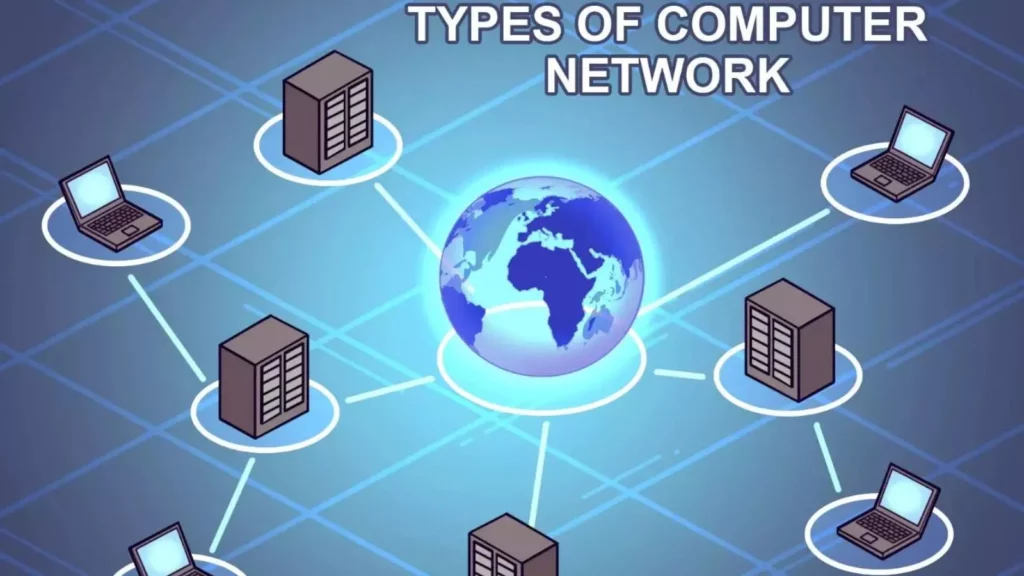What is a Computer Network, what different types does it consist of and how does it work? All of these things will be discussed in this article about computer network 101.
A computer network is a family of two or more computers linked together to share data and communicate with one another. A computer network can be built as small as two computers or as large as millions of computers worldwide. Networks may be peer-to-peer, meaning that they are not centrally managed, or they may have a centralized administration. These networks can be classified in various ways, but the most popular distinction is between local area networks (LANs) and wide-area networks (WANs).
Table of Contents
- What are the Different Types of Computer Networks?
- How does a Computer Network Work?
- What are the Benefits of a Computer Network?
- How Do Routers Get Connected in A Network? And Why is it Important?
- Conclusion:
What are the Different Types of Computer Networks?

Computer networks are a vital part of every modern-day business. They are the backbone of any company’s infrastructure, and without them, many businesses would be unable to function.
There are three types of computer networks:
Local Area Networks:
LANs are used for very short distances, typically in an office or home. They use a wired connection and the computers in the network all share the same physical connection. LANs can be wired or wireless.
Wide Area Networks:
A WAN connects two or more LANs that are not close to each other, typically over a long distance using a telecommunication link such as telephone lines, fiber optics, cable television lines, and satellite connections.
Personal Area Networks:
A PAN connects two devices that are very near to each other – like your phone and laptop – using Bluetooth technology.
Virtual Private Networks:
VPNs are used to protect corporate networks and personal information on public Wi-Fi hotspots or other untrusted networks. Data is sent across the network by encrypting it, which means they don’t use as much power or bandwidth as a normal network.
How does a Computer Network Work?

A computer network is a collection of computers, devices, and cables that are connected to share resources. Networks can be classified according to the type of connection they use, such as wired or wireless. Wired networks are connected by cables, while wireless networks use a connection that doesn’t need cables.
Computers and devices on a network are able to share information with one another through their connections. This allows them to work together on projects and share files with one another. It also means that they can access the internet from any computer in the network, as well as connect to other devices like printers, scanners, and other computers.
What are the Benefits of a Computer Network?
There are many benefits of computer networks.
For example, they provide an easy way for people in different locations to communicate with each other, share ideas, and collaborate on projects.
Computer networks also make it possible for people to use the same software programs on different computers at the same time and across the internet.
Computer networks are different from personal networks because they are designed to share information between computers and groups of computers at the same time.
They are an essential part of modern society as they provide access to information and services that people need on a daily basis.
How Do Routers Get Connected in A Network? And Why is it Important?
Routers are devices on the network that help traffic flow between different parts of the network.
Routers are often used to connect networks, but they can also be used to connect multiple networks together or to provide access from an ISP’s backbone. They have a variety of uses in a business environment as well. They also have a filtering function where they can filter out any unwanted data and protect your network with security features such as firewalls and encryption. Routers will only work in a network if they’re connected with an ethernet cable, which is what provides the physical connection between them.
The router is one of the most important devices in any type of network setup because it is the device that handles all data traffic.
Also, check out my article on What is Enterprise Computing?
Conclusion:
Computer networks are a vital part of how we live and work. They are the backbone of our digital world, enabling us to conduct business, access information, and communicate in ways that were not possible before.
Computer networks have been a fundamental part of the IT industry for decades. But in recent years, they have evolved at a breakneck pace as new technologies and services have emerged. And the pace is only accelerating.
We are living in a digital age, and the speed at which these digital technologies are emerging is staggering. We rely on technology to help us define and address all of our major needs, whether they be education, healthcare, or even recreation. And these systems must be interconnected to enable collaboration and teamwork across institutions, regions, and countries.
Well, in this article I have provided the essential basics of computer networking and have highlighted some points about its benefits. Be sure, to ask any questions in the comment section.
Peace out!





